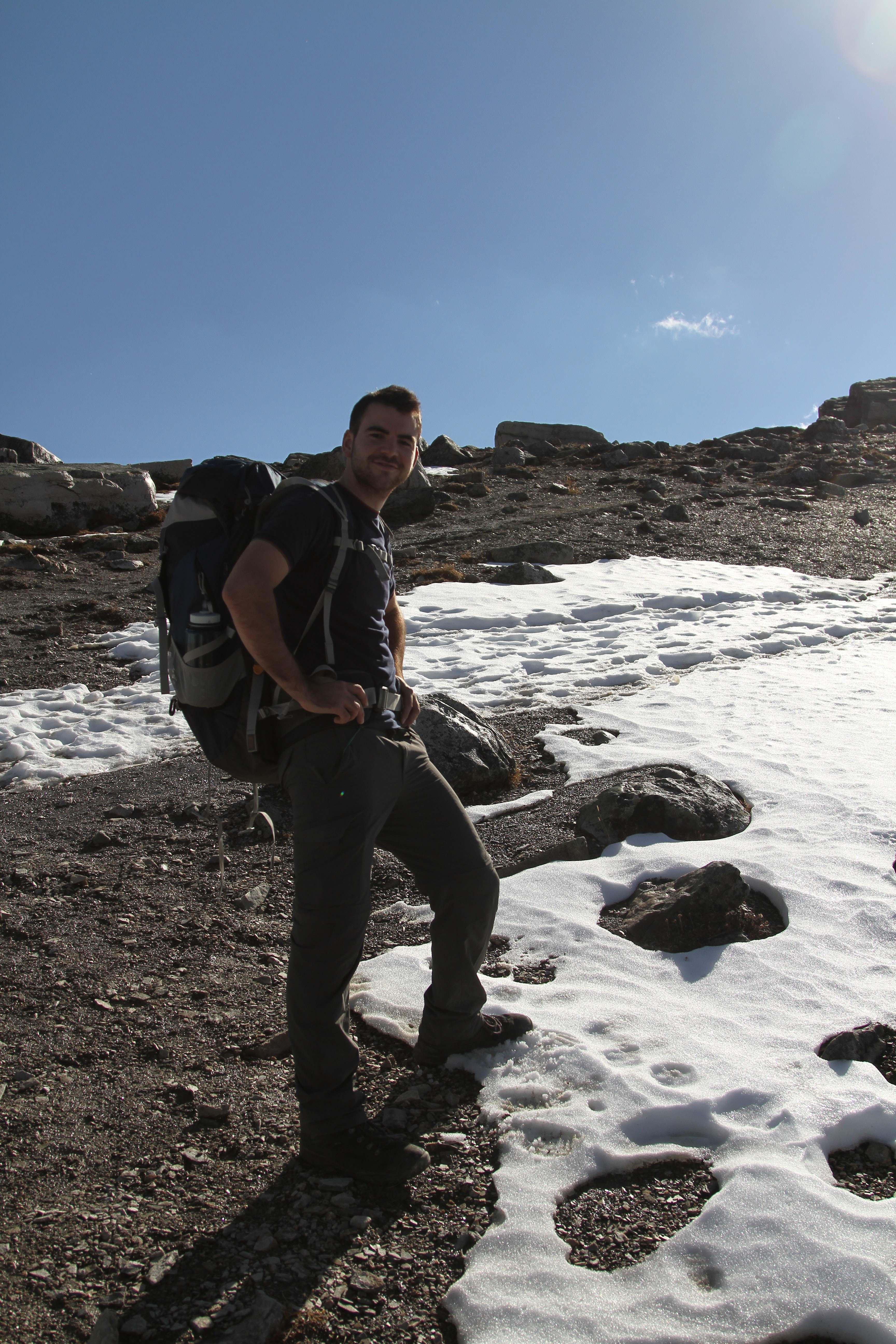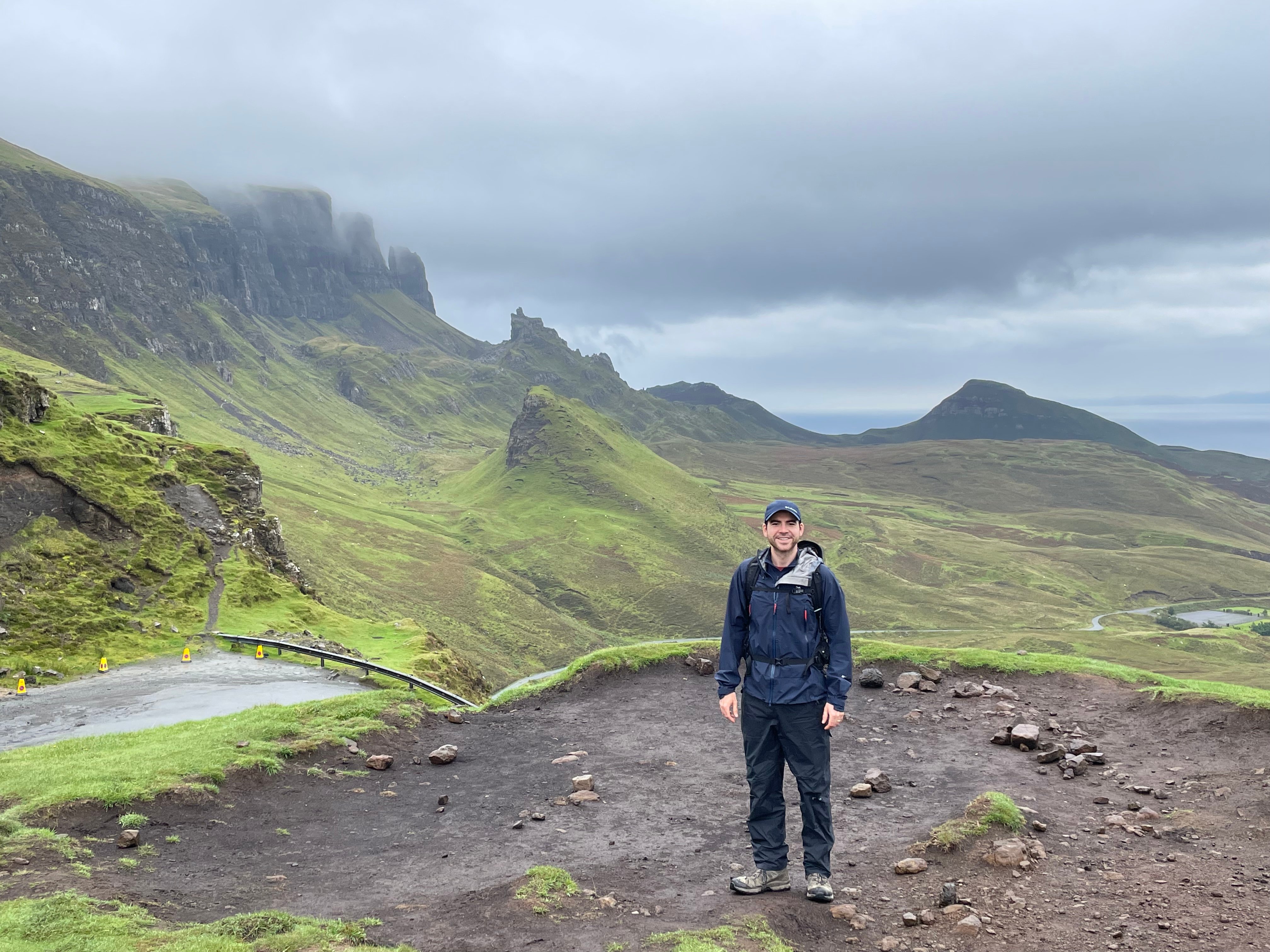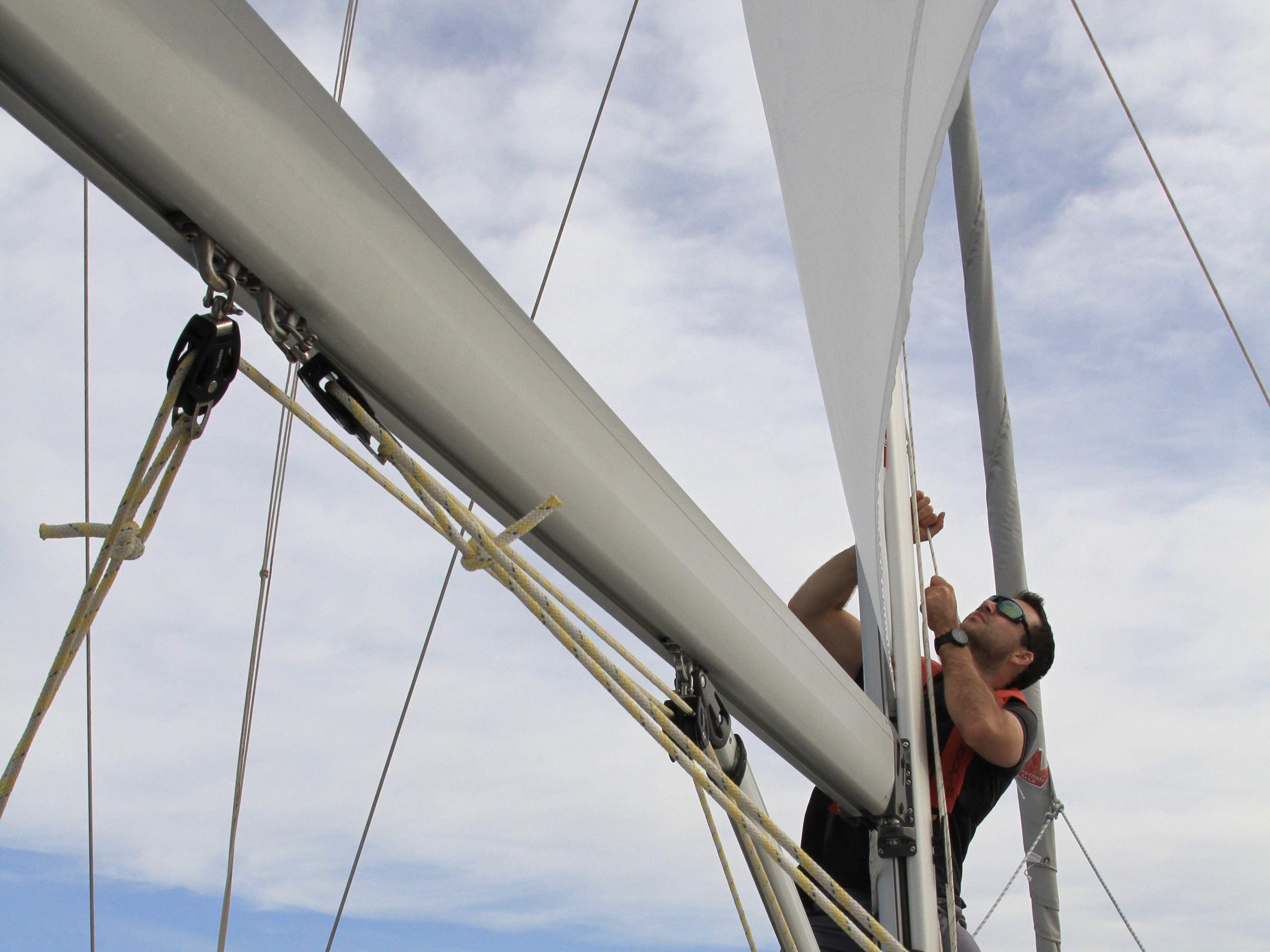New in EOAS: Hal Bradbury—Assistant Professor in Chemical Oceanography

We are pleased to welcome Dr. Hal Bradbury, who started his position as Assistant Professor at EOAS this January. Scroll down to watch our interview with Dr. Bradbury!
Q: Would you like to tell us a bit about yourself?
HB: I'm a chemical oceanographer and technically, a marine isotope biogeochemist. I did a geology-based undergraduate program in Earth Sciences at Imperial College London. In my Master’s study, I focused on carbonate sedimentology by looking at stable isotopes in carbonates and phosphates. During my Ph.D. at the University of Cambridge, I used a range of isotope systems, including calcium isotopes, to look at the global carbon cycle and started to get interested in the biogeochemistry side—the interaction between life and the carbon cycle itself. I worked on ocean sediments and how they interact with the overlying ocean, and I continued developing that area during my postdoc including utilising numerical techniques, such as reactive transport modelling and machine learning, along with field and lab studies. I am interested in finding out how we can use isotope tracers and combine them with modelling to learn more about modern and ancient Earth processes.
Q: What is your favourite part when working on these research topics?
HB: I like developing research tools and finding new applications. One of the greatest things about specializing in calcium isotopes in my Ph.D. was that I could apply it in a whole range of different environments. I have applied it in lake and marine sediments, hydrothermal systems, as well as microbial cultivation-related projects. I think if you have a good understanding of a research tool, you can apply it to many areas which can lead to interesting insights and research projects.

Q: What do you consider your major contributions or accomplishments so far?
HB: When I started my Ph.D., I got to set up the lab at Cambridge to measure calcium isotopes, including setting up an HPIC (high-performance ion chromatography) to separate calcium and a TIMS (thermal ionisation mass spectrometer) to measure the isotope ratios. These experiences not only gave me an understanding of the back-end workings of how these measurements are made, but also led to lots of collaborations. I got to work with researchers from many institutions to solve a variety of problems, which opened my eyes to how collaborative science can be. My other major accomplishment would be getting funding and positions. I was very fortunate to get a four-year NERC Independent Research Fellowship straight out of my Ph.D., which was an invaluable opportunity to explore my research interests and decide on the direction I wanted to go. Also, getting this position at EOAS is exciting as it allows me to continue developing my research and teaching interests.
Q: What research topics are you excited about now?
HB: I’m excited about carbon cycling in the sediments and how they link to the overlying ocean. We understand that the carbon cycle is key to controlling the Earth’s climate, and that the main sink of carbon from the surface to solid earth is in the oceans, where it is deposited as carbonate minerals and inorganic carbon on the seafloor. What I'm interested in is what happens to this carbon once it's deposited: it could either just be preserved as it was deposited, or it can be broken down by a series of different microbial reactions. These interactions control what form the carbon is stored in and whether it is released back into the ocean. There are also lots of other elements involved in these processes, which can be either released or consumed, influencing geochemical cycles on a global scale.
I want to use my expertise in stable isotope tracers to look at carbonate mineral precipitation and dissolution. I will also use carbon and oxygen isotopes to look at the organic side of things and magnesium isotopes to look at silicate reactions occurring in the sediments. I will also use numerical modelling to fully understand the processes controlling the isotope signals.

Q: What topics do you enjoy teaching?
HB: I enjoy teaching chemical oceanography and a broad range of earth science. I am going to teach Introductory Oceanography in September and Chemical Oceanography and Marine Geochemistry in January. By understanding the chemistry of the oceans, you get exposed to important questions including how the climate works today, and how ocean sediment can be used to reconstruct the climate of the past.
I also really enjoy teaching geology in the field. I've done quite a lot of field teaching and I recently went to Bamfield to observe the course Methods in Oceanography in preparation for teaching it in the future. I think students get a chance to see the scale of geological and oceanographic processes in the field, which can be hard to grasp in lecture-based learning. Additionally, spending quality time with lecturers, researchers, and experts will provide the students with different experiences from a purely lecture-based course.
Q: What are the most important things you hope students can come away with in your class?
HB: The most important thing I hope the students come away with from my courses is the interconnectivity between different areas of study. If someone wants to understand past conditions of the Earth, they need to learn about what happened in the past ocean, but also what happened in the atmosphere and sediments. I hope that over the course of a degree, students can understand how different modules are linked with each other and be able to piece together an overall picture of the global environment.

Q: What drives you to EOAS?
HB: What I really like about EOAS is how interdisciplinary the department is. There are researchers in many different areas and lots of opportunities for great collaborations. I can see myself collaborating across the whole department and working with oceanographers, isotope geochemists, geologists, and numerical modellers. Also, I like the ability to conduct oceanographic fieldwork around here, like in the Strait of Georgia and at Bamfield, as well as the great lab facilities including the PCIGR. I also value the combined focus on both excellent research and new teaching methods, such as the great support provided by the department for undergraduate and graduate teaching.
Q: What are your short-term and long-term goals at EOAS?
HB: My short-term goal is to set up the lab with a range of isotopes, get to know the department, and start looking for research students. In the longer term, I look forward to building up my research team and getting into my teaching here.
Q: Would you like to share some fun facts about yourself?
HB: I like being outdoors. One of the great things about coming here is the amazing scenery, with the mountain backdrop behind the city and I am really looking forward to going out camping and hiking in some of the wilder parts of BC and up into the Rockies. I’ve previously spent a month camping in the Rockies and some of the national parks there, like Jasper and Yoho. I also enjoy being out on the water, both for fun and for work. I have done a lot of rowing, sailing and a bit of kayaking, so I look forward to seeing some of the amazing coastlines around here and exploring the water.